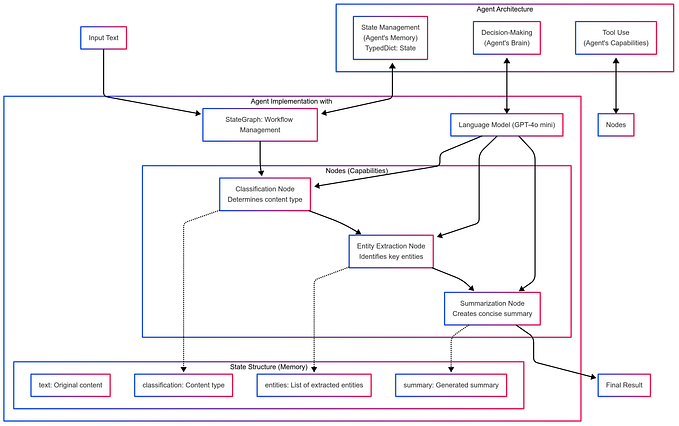
In the ever-evolving landscape of mobile app development, the quest for efficient cross-platform frameworks has led to the emergence of powerful contenders like Flutter and Ionic. These frameworks address the challenges of creating applications that seamlessly operate across both Android and iOS platforms, streamlining development processes and reducing time-to-market. Flutter, an open-source UI toolkit crafted by Google, utilizes the Dart programming language to deliver a high-performance experience with its compiled-to-native-code approach. Its hallmark lies in a rich set of customizable widgets that ensure a consistent and expressive user interface.
On the other hand, Ionic, an open-source framework developed by Drifty Co., adopts a different approach by leveraging familiar web technologies such as HTML, CSS, and JavaScript. While it facilitates rapid development through web views, Ionic may not match Flutter’s native performance. The choice between these frameworks hinges on project requirements, developer expertise, and the desired balance between performance and ease of use. As we delve into this brief overview, we will explore the distinctive features, strengths, and considerations that distinguish Flutter and Ionic in the dynamic realm of cross-platform mobile app development.
Usage of Flutter:
Flutter, a robust open-source UI software development toolkit created by Google, has gained widespread adoption across various domains, owing to its versatile features and efficient performance. The primary use cases for Flutter revolve around its capabilities in:
Cross-Platform Mobile App Development:
The foremost application of Flutter is in the development of cross-platform mobile applications. Developers leverage Flutter’s single codebase to create applications that seamlessly run on both Android and iOS platforms. This significantly reduces development time and resources, making it a popular choice for businesses aiming to reach a broad audience.
Customized UI/UX Design:
Flutter stands out for its rich set of customizable widgets, enabling developers to design visually stunning and highly tailored user interfaces. This customization extends to creating consistent and expressive user experiences, making it an ideal choice for applications where design excellence is a priority.
High-Performance Apps:
Dart, the programming language used in Flutter, is compiled to native code. This compilation process enhances the performance of Flutter apps, making them suitable for resource-intensive applications like gaming, multimedia, and other demanding scenarios.
Enterprise App Development:
Flutter finds significant usage in enterprise app development. Its ability to deliver a native look and feel contributes to the creation of polished and professional applications that meet the standards expected in business and corporate environments.
Flutter App Development for Various Industries:
Flutter has made inroads into diverse industries, including finance, healthcare, education, and more. Its adaptability and performance make it suitable for a wide array of applications, ranging from consumer-facing apps to internal enterprise solutions.
Rapid Prototyping and Iterative Development:
Flutter’s “hot reload” feature allows developers to see the immediate impact of code changes, facilitating rapid prototyping and iterative development. This feature enhances the development cycle, making it efficient and developer-friendly.
Usage of Ionic:
Ionic, an open-source framework developed by Drifty Co., has found widespread application in the software development landscape, particularly in the realm of web and mobile app development. Key usage scenarios for Ionic, often referred to as Ionic app development, include:
Web Application Development:
Ionic is frequently employed for building web applications using standard web technologies such as HTML, CSS, and JavaScript. Its framework allows developers to create responsive and feature-rich web applications, making it an excellent choice for projects with a web-centric focus.
Hybrid Mobile App Development:
One of the notable use cases for Ionic is in the development of hybrid mobile applications. By embedding a web view within a native container, Ionic enables developers to leverage web technologies while still producing apps that can be distributed through app stores.
Rapid Prototyping and Development:
Ionic is well-suited for projects that require rapid prototyping and iterative development. The “ionic serve” command allows developers to preview their applications in a web browser during the development phase, facilitating quick iterations and faster development cycles.
Community-Driven Projects:
Ionic has cultivated a robust community, and its ecosystem boasts a wide range of plugins and extensions. This makes it an attractive choice for community-driven projects where a strong support network and diverse plugin options are essential.
Cross-Platform Development with a Single Codebase:
Ionic provides a way to develop cross-platform mobile applications using a single codebase. While its primary focus is on web technologies, Ionic allows developers to extend their applications to multiple platforms, including Android and iOS.
Educational and Small to Medium-Sized Projects:
Due to its simplicity and ease of use, Ionic is often favored for educational purposes and smaller to medium-sized projects. Developers familiar with web technologies can quickly adapt to Ionic, making it an accessible choice for various learning environments.
Flutter vs Ionic: Design and Performance Comparison
Mobile app development frameworks like Flutter and Ionic play a crucial role in shaping the user interface (UI), design aesthetics, and overall performance of applications. Let’s delve into a detailed comparison of Flutter and Ionic in terms of design principles, UI components, and performance characteristics.
Design and UI:
Flutter:
Customizable Widgets: Flutter’s strength lies in its extensive set of customizable widgets. These widgets facilitate the creation of highly tailored and visually appealing user interfaces, allowing developers to maintain a consistent design across platforms.
Expressive UI: Flutter’s declarative approach to UI design enables developers to express the desired interface easily. This results in a more intuitive and expressive UI-building process.
Ionic:
Web Technologies: Ionic relies on standard web technologies like HTML, CSS, and JavaScript for UI design. While this approach simplifies development for web developers, it may lead to a less native look and feel.
Theming and Styling: Ionic provides theming and styling options to customize the appearance of applications. However, achieving a fully native look can be more challenging compared to Flutter.
Performance:
Flutter:
Compiled to Native Code: Dart, the language used in Flutter, is compiled to native code. This compilation process contributes to high-performance applications, especially in terms of startup times and overall responsiveness.
“Hot Reload” Feature: Flutter’s “hot reload” feature allows developers to instantly see the effects of code changes, facilitating faster iterations and debugging.
Ionic:
Web Views: Ionic relies on web views for rendering UI components. While this approach simplifies development and allows for rapid prototyping, it may introduce some performance overhead, particularly in resource-intensive applications.
Performance Considerations: Ionic’s performance, especially in comparison to Flutter’s native compilation, may be perceived as slightly lower. This can impact the user experience, particularly in complex applications.
Conclusion
In the ongoing comparison between Flutter and Ionic for app development, the decision hinges on project-specific nuances and developer preferences. Flutter, renowned for its highly customizable UI, native performance, and expressive development environment, stands out for applications requiring design precision and optimal performance. Conversely, Ionic, leveraging web technologies, provides a streamlined development experience, rapid prototyping, and a robust community, making it a pragmatic choice for certain scenarios.
The preference between these frameworks, whether it be the native-like experience of Flutter or the agility of Ionic, is largely dictated by prioritizing factors such as design aesthetics, performance demands, and the development team’s familiarity with specific languages. In navigating the landscape of app development, Flutter app development excels in delivering a native feel, while Ionic proves advantageous for rapid iterations, community-driven projects, and scenarios aligned with a web-centric development approach. The “better” choice unfolds by aligning these considerations with the intricacies of each development endeavor.









